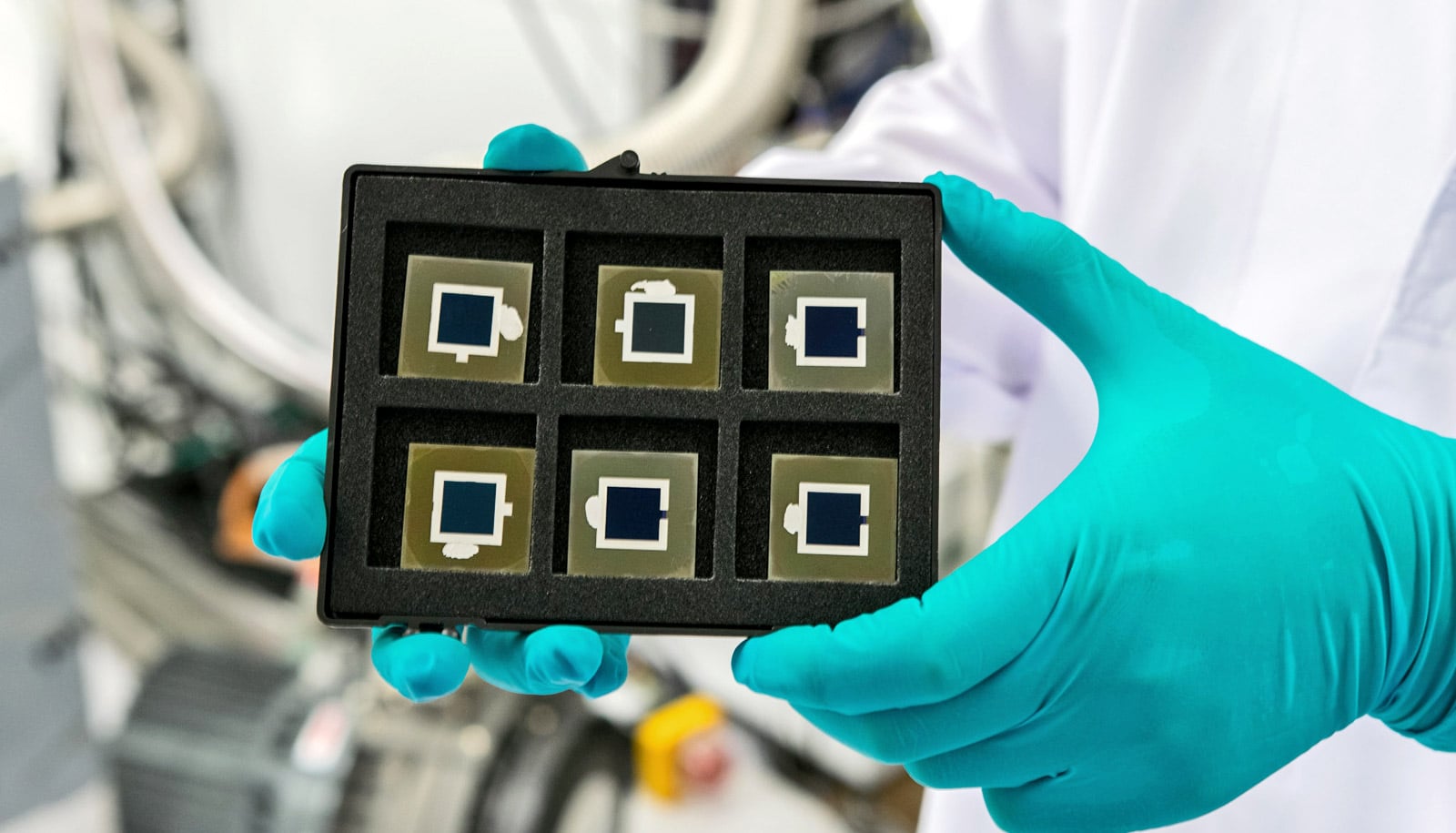As scientists continue to debate how organic solar cells convert sunlight into electricity, a recent study suggests the predominant working theory is incorrect.
The findings, published in the journal Nature Materials, could steer future efforts to design materials that boost the performance of organic cells.
“We know that organic photovoltaics are very good,” says study coauthor Michael McGehee, a professor of materials science and engineering at Stanford University. “The question is, why are they so good? The answer is controversial.”
What causes the split?
A typical organic solar cell consists of two semiconducting layers made of plastic polymers and other flexible materials. The cell generates electricity by absorbing particles of light, or photons.
When the cell absorbs light, a photon knocks out an electron in a polymer atom, leaving behind an empty space, which scientists refer to as a hole. The electron and the hole immediately form a bonded pair called an exciton.
The exciton splits, allowing the electron to move independently to a hole created by another absorbed photon. This continuous movement of electrons from hole to hole produces an electric current.
In the study, the team addressed a long-standing debate over what causes the exciton to split.
“To generate a current, you have to separate the electron and the hole,” says senior author Alberto Salleo, an associate professor of materials science and engineering at Stanford. “That requires two different semiconducting materials.
If the electron is attracted to material B more than material A, it drops into material B. In theory, the electron should remain bound to the hole even after it drops.
“The fundamental question that’s been around a long time is, how does this bound state split?”
The hot effect
One explanation widely accepted by scientists is known as the “hot exciton effect.” The idea is that the electron carries extra energy when it drops from material A to material B. That added energy gives the excited (“hot”) electron enough velocity to escape from the hole.
But that hypothesis did not stand up to experimental tests, according to the team.
“In our study, we found that the hot exciton effect does not exist,” Salleo says. “We measured optical emissions from the semiconducting materials and found that extra energy is not required to split an exciton.”
So what actually causes electron-hole pairs to separate?
“We haven’t really answered that question yet,” Salleo says. “We have a few hints. We think that the disordered arrangement of the plastic polymers in the semiconductor might help the electron get away.”
In a recent study, Salleo discovered that disorder at the molecular level actually improves the performance of semiconducting polymers in solar cells. By focusing on the inherent disorder of plastic polymers, researchers could design new materials that draw electrons away from the solar cell interface where the two semiconducting layers meet, he adds.
“In organic solar cells, the interface is always more disordered than the area further away,” Salleo explains. “That creates a natural gradient that sucks the electron from the disordered regions into the ordered regions. ”
More efficient
The solar cells used in the experiment have an energy-conversion efficiency of about 9 percent. The Stanford team hopes to improve that performance by designing semiconductors that take advantage of the interplay between order and disorder.
“To make a better organic solar cell, people have been looking for materials that would give you a stronger hot exciton effect,” Salleo says. “They should instead try to figure out how the electron gets away without it being hot. This idea is pretty controversial. It’s a fundamental shift in the way people think about photocurrent generation.”
Contributors include researchers from the University of Potsdam; the Institute for Applied Photophysics; the University of California, Berkeley; the King Abdullah University of Science and Technology; the Colorado School of Mines; and the University of Oxford.
The Stanford Center for Advanced Molecular Photovoltaics and the US Department of Energy supported the work.
Source: Stanford University


